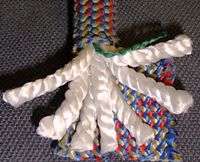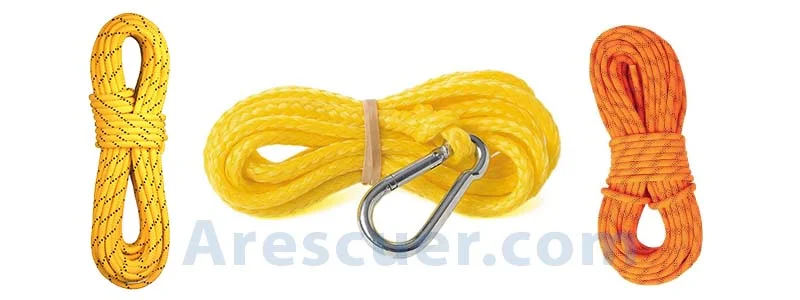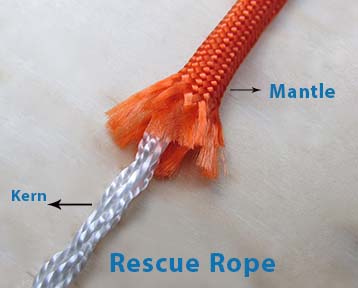OBJECTIVES
After Reading this chapter you will be able to:
- Describe ropes.
- Describe the part of rope according to manufacturing.
- List the types of ropes according to usage.
- List the types of ropes according to construction.
- Describe the care and maintenance of ropes.
Ropes
Ropes are very important tool for long years ago. It is with humane from the start. In daily life it helps in many ways.
A tool that is used in emergency services to save human lives
1.1 Parts of the Rope
- The part of the rope which is tied with the anchor point is called running rope
- The part of rope which remains at the end behind the applied knot is called standing rope.
- Working rope or working end is the part which is used to tie the victim during evacuation.
1.2 Parts of the Rope (according to manufacturing)
Kern:
 It is the internal fiber of the rope and 70% strength depends upon this part.
It is the internal fiber of the rope and 70% strength depends upon this part.
Mantle:
It is the outer covering of the rope. It protects the kern and 30% strength of rope is due to this.
2.Types of Ropes (according to use)
The ropes are divided into two types.
Static Rope
Dynamic Rope
Static Rope
This type of rope is used in rescue activities such as rappelling, ascending and evacuating victim from depth. There is elongation from 18% to 20% to before breaking. It is not used in climbing.
Dynamic Rope
This rope is used for climbing and has much elastic limit to bear any jerk in case of fall.
Types of Ropes (according to construction)
3.1 Utility Rope
3.2 Life safety Rope
3.1 Utility Rope
This rope is made of Organic Fiber and cannot be used in life saving activates. It is used to secure the rescue equipment. It is made by connecting several fiber so it strength is in doubt. Water and other chemical damage this very fast. The material is used (Cotton, Vanilla, Jute, sisal and all natural fiber. These ropes cannot bear temperature.
3.2 Life safety Rope
This rope is made of inorganic fibers. There it is a single fiber throughout the rope which enhances the strength of rope. Polypropylene, polyester and polyethylene material is used to make these. These are good against water, chemical and temperature to a certain level.
Care of Ropes
4.1 Care of ropes before use
- Remove the kinks in ropes
- Secure the end of ropes with stopper.
- Inspect the rope thoroughly.
- Do not use if there is any damage.
4.2 Care of ropes during use
- Do not drag on ground.
- Do not use on wet places.
- Do not pass over the sharp edges.
- Avoid heat, grease, oil and chemical.
4.3 Care of ropes after use
- Inspect the rope thoroughly. If there is damage tie a knot there.
- Fold the rope after removing kinks.
- Store the rope in well ventilated place and avoid direct sunlight, oil, grease etc.

Jordan Hayes, a rescue professional with years of hands-on experience, shares expert insights and tips to enhance safety and preparedness on arescuers.com


